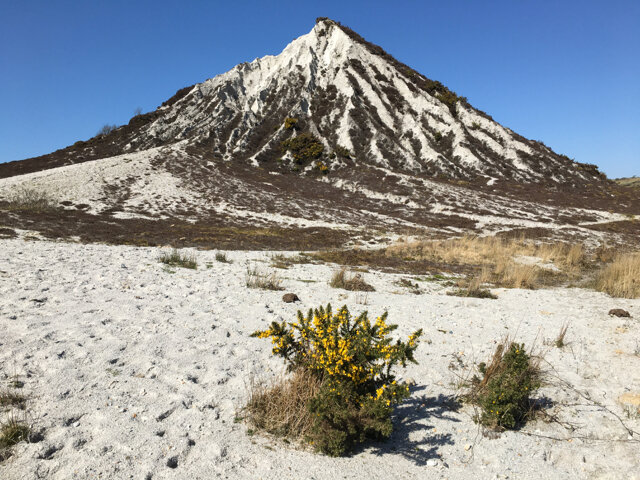Up and down the Cornish Alps
When it comes to the environs around St Austell, I would say it inspires me to flights of imagination, quite literally, in which I imagine myself flying over the scarred landscape then skiing down the waste dumps of China clay before diving into the toxic azure pools.
The surreal area – part lunar landscape, part abandoned ski resort – was once called the Cornish Alps. Anyone old enough to remember St Austell in the 1970s will invariably recall the stark, white pyramids of the China clay area. Nowadays the mounds of waste, created because for every ton of useable clay there was at least five tons unusable, are mostly covered in vegetation but many of the snowy-like peaks remain, towering over St Austell and other villages in the area, such as St Stephen and St Dennis.
The story of China clay in Cornwall has its origins along the Silk Road from China in the 16th century, when fine and expensive Chinese porcelain used to make its way to Europe. Up until the 18th century English pottery remained pretty coarse, and the method of how to make China porcelain remained a closely guarded secret until William Cockworthy, a pharmacist from Plymouth, set out to unearth the recipe.
China clay is decomposed granite and a rare commodity, found in only a few places in the world. In 1746 Cockswothy discovered kaolin, also known as China clay, near Helston and then finding it of better quality around St Austell, which was then a village with a few hundred residents. In less than 100 years there would be some 7,000 people working in the area and 65,000 tons of China clay mined each year. Nowadays, China clay is largely mined for uses other than porcelain, including bleaching paper, paints, dyes and cosmetics.
Despite large parts of St Austell now being pretty deprived, and the surrounding landscape scarred, there are still lovely spots. Luxulyan and Tregargus Valleys are beautiful woods with rivers running through them. Fascinating remains of the mining industry can be seen in both, with nature slowly but surely reclaiming them.
Previously on Barnflakes
The China clay pits around St Austell
Welcome to St. Decay











